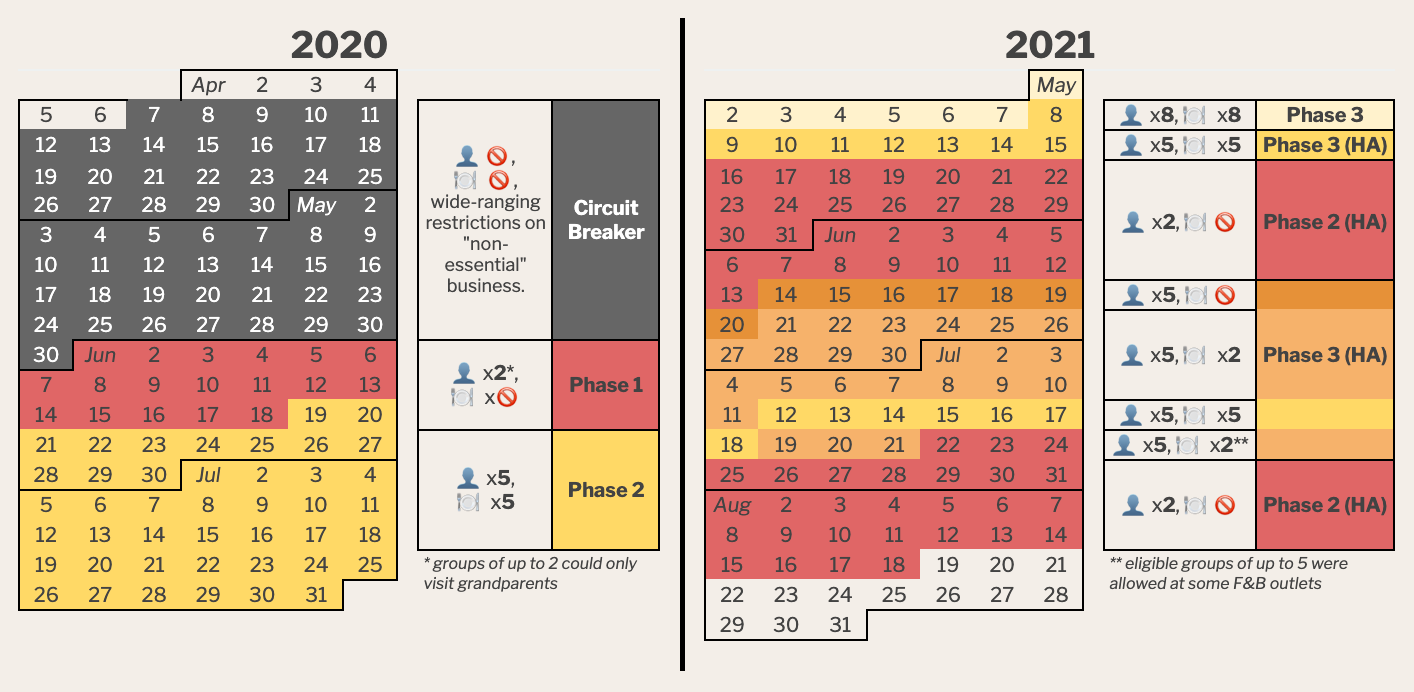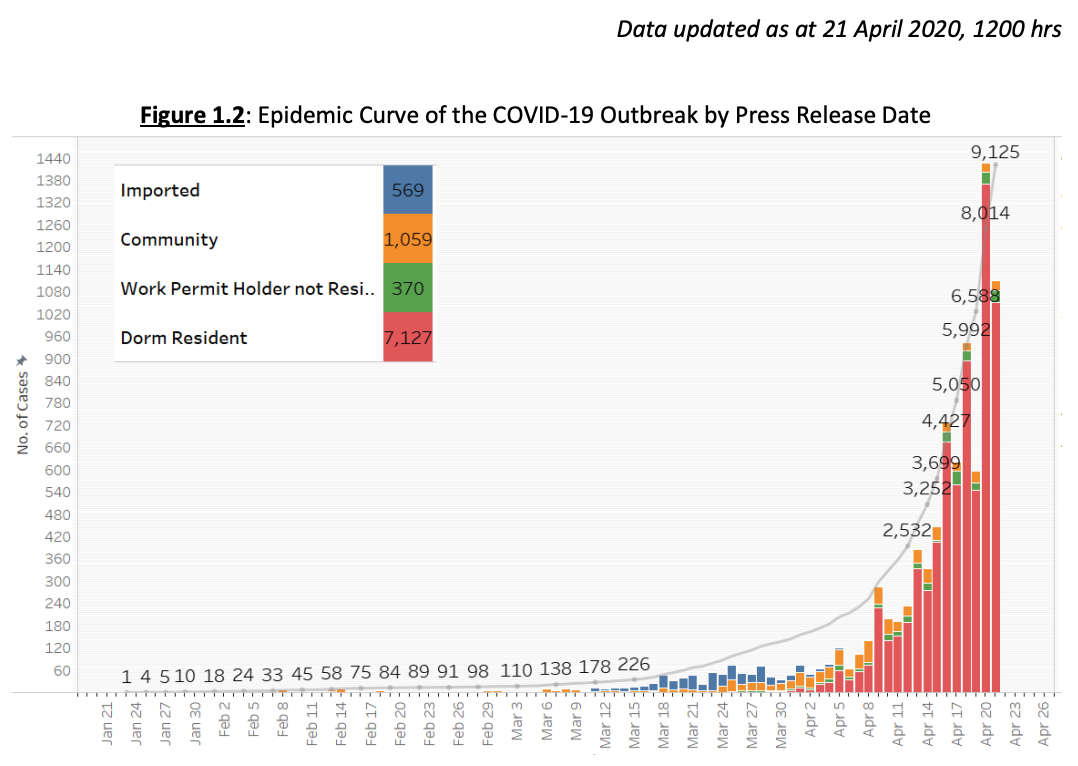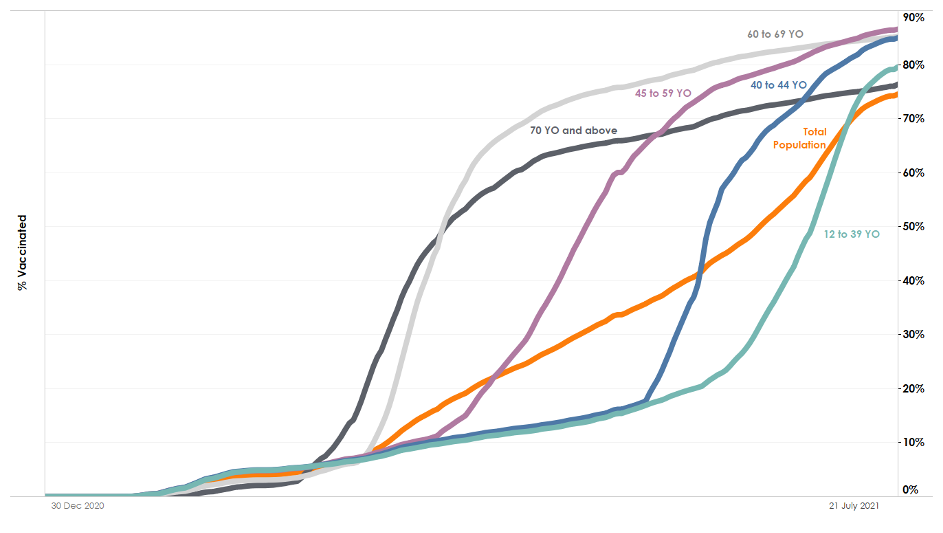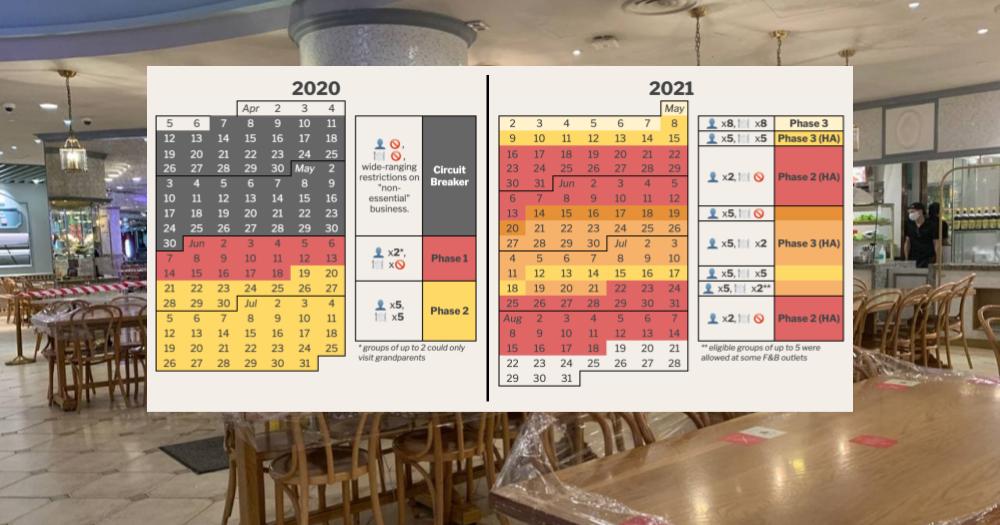When Phase 2 (Heightened Alert) was first announced, some called for a full-fledged Circuit Breaker.
These were the ones who believed that the new restrictions were not much less restrictive than they had been in Apr. 2020.
Quick recap: That was when the government ordered all non-essential businesses to shut down, restricted F&B outlets to providing takeaway and delivery only, and banned physical social gatherings altogether, as part of a nationwide "Circuit Breaker" to stop the spread of Covid-19.
As it turned out, during Phase 2 (HA) from May 19, many activities that were off limits during the CB of 2020 — like shopping, swimming, and even gambling — were permitted, even though gatherings were limited to twos, and dining in was out of the question.
Phase 2 (HA) might feel worse than Circuit Breaker
Phase 2 (HA) then gave way to Phase 3 (HA), under which dining in eventually resumed in cautious groups of two, then five, before being scaled back to two. Which led us back to Phase 2 (HA) once again.
Although activities like shopping, swimming, and socialising (in pairs) are still allowed, here's why the past few weeks' worth of "soft lockdowns" might just feel worse than the more restrictive Circuit Breaker.
1) A feeling of being penalised for others' wrongdoing
It was flagrant breaches of Covid-19 measures that likely caused the KTV clusters to explode.
It also appears that the scale of wrongdoing going on behind closed doors was quite significant — more than 10 KTV lounges have been identified so far, with those who visited the premises being encouraged to come forward and get tested.
Anger at the KTV lounges was then fuelled by the revelation that a number of them had continued to operate, blatantly breaching Covid-19 measures even after the first cases were announced, and the rest of the country grappled with the impact of new restrictions, and in some cases, even after the government had suspended all KTV lounges & nightclubs operating as F&B establishments.
However, the dust from that appears to have settled — for now — and health minister Ong Ye Kung has said that this second edition of Phase 2 (HA) was not due to the KTV cluster.
After all, Ong reasoned, the number of cases from the KTV cluster has come down.
Rather, Ong explained that it was the Jurong Fishery Port cluster which prompted Phase 2 (HA) instead, out of concern for seniors' health and well-being.
It would be, after all, seniors who frequented various markets around the island where positive cases were found, likely due to fishmongers and stallholders who visited the Jurong Fishery Port and brought the virus back to their stalls.
But didn't the virus spread from the KTV cluster to Jurong Fishery Port?
According to MOH's director of medical services Kenneth Mak on Jul. 20, MOH believes that the Covid-19 infection in the Jurong Fishery Port cluster was possibly introduced via sea route from Indonesian or other fishing boats that have brought fish into the port.
Contrary to the seemingly-obvious implications drawn from reports that industrious fishery port staff moonlighting as hostesses had spread the virus to the port, the direction of infection appears to have been the other way around: from the port to the KTV lounges.
But even if we are not too keen on assigning blame for the exploding clusters and tightened restrictions, there are other reasons why we might be feeling especially down amid the latest set of restrictions.
2) We're unable to establish routines
The Circuit Breaker started on Apr. 7 and was meant to last for about four weeks.
Midway through, on Apr. 21, it was extended by a further four weeks till Jun. 1.
There was then a six-week period of Circuit Breaker restrictions, with some further tightening along the way (including closing bubble tea shops).
With six weeks, it was possible to take some time to settle in and establish a routine of sorts, which for some included sending food via delivery to friends and family, as a way of keeping in touch.
 Image by Nigel Chua.
Image by Nigel Chua.
This year, however, the quickly-changing restrictions mean that one can only plan so far ahead.
Just ask F&B outlets, who would have reconfigured their spaces from Jul. 12 to accommodate up to five per group, then asked to enforce a rather complex set of rules just one week after the previous change, under which groups of five had to be vaccinated, recovered from Covid-19, tested in advance, or be under the age of 12.
These rules took effect from Jul. 19 and would last for all of three days, before dining in was ruled out from Jul. 22.
Yes, the swiftly-changing measures are being implemented in response to a dynamic Covid-19 situation, with two large clusters appearing, seemingly out of nowhere.
The measures are also much more specific, targeting "high risk activities" like dining in and strenuous indoor exercise, which makes them overall much less restrictive that Circuit Breaker where one could not even meet with their significant other — or had to do so surreptitiously, at the risk of being jailed and fined.
But that does not change the fact that routines have been subject to disruption much more often this year, as compared to the Circuit Breaker period last year.
3) Our friendships and relationships are being affected
Not being able to establish a routine or plan ahead would likely have placed strain on friendships and relationships as well.
Whenever the restrictions changed, casual meetings between friends would have had to be rescheduled or rearranged online. All of this takes energy, with the path of least resistance being to simply wait for restrictions to be relaxed, before making arrangements again.
It has also become a "valid excuse" to cite the fact that one "does not plan that far ahead these days" when rejecting friends' requests to meet up.
Another effect being felt more acutely this year is the fact that — aside from weddings and funerals — there have been no large gatherings for more than a year, meaning that one has far fewer opportunities to make new friends than before.
And one of the three key ingredients to developing close friendships is "repeated, unplanned interactions" (with the other two being proximity, and a setting that encourages people to let their guard down and confide in each other, according to The New York Times).
It is now that much harder to have planned interactions, let alone unplanned ones.
All of this has meant that we are more isolated than we were before.
4) The current measures are pre-emptive, and the Covid-19 threat is less apparent
Singapore's Covid-19 situation right now is much more stable, which could make it more difficult for us to stomach the reintroduced restrictions.
What's more, the current Phase 2 (HA) measures are being taken out of an abundance of caution, "to pre-emptively tighten up social activities," health minister Ong Ye Kung said in a Jul. 21 Facebook post.
Ong cautioned on Jul. 16 that ICU capacity and Singapore's healthcare system could reach its limit in just five weeks, but the threat of this might be less apparent to a layman.
Just looking at the current numbers, Singapore's hospitals might not appear to be facing the imminent "system collapse" that Ong warned of — there is just one case in ICU as of Jul. 21, and consistently single-digit numbers have stayed low in spite of two big clusters being detected.
Still, it's difficult for non-experts to know whether the current measures are too strict or too lax, leaving room for opinions on both sides.
In contrast, there was no question about the seriousness of the situation amid the Circuit Breaker last year:
 Screenshot via MOH situation report, Apr. 21, 2020
Screenshot via MOH situation report, Apr. 21, 2020
This collective sense of emergency last year was likely part of what spurred people in Singapore to donate a record amount of $102 million on donation platform Giving.sg in the previous financial year, not to mention the numerous community initiatives that were started to support migrant workers, healthcare workers, elderly hawkers, low-income families, and more.
5) What comes next feels uncertain
Going into the Circuit Breaker last year was followed by many months of consecutive easing of measures: Things got better and better and better over time, with Singapore moving to Phase 1, Phase 2, and Phase 3, which lasted all the way up to May this year.
This year, however, we're seeing measures being tightened and relaxed with seemingly no end point in sight — there have already been seven changes to the prevailing restrictions in the past three months.
We're looking forward to living with Covid-19 as endemic, but apparently, we aren't quite there yet
Many would remember Prime Minster Lee Hsien Loong's address on May 31 where he outlined Singapore's vision for tackling Covid-19.
You might even recall this exact quote:
"In the new normal, Covid-19 will not dominate our lives."
Among other things, PM Lee hinted that even the longstanding mask-wearing mandate might be relaxed, albeit in outdoor settings.
The MTF even offered a sneak peek into what the new normal could potentially bring:
Needless to say, this new normal has become hotly anticipated.
Then, about a month after PM Lee's speech, MOH's nightly report was presented differently, from Jun. 29. Details of positive cases, and the locations they had visited, were replaced by statistics on vaccination, hospital capacity, and so on.
MOH explained:
"The Multi-Ministry Taskforce is changing the format of the daily Covid-19 press releases, as we move to a new phase of battling the pandemic, with a strong focus on preventing the virus from spreading, vaccinating our population and starting the process to transit to a new normal." (emphasis ours)
It turns out, however, the "new normal", endemic phase of the pandemic has yet to arrive, even though we are already in a "new phase".
If you didn't quite catch that distinction, you might have been rather disappointed to find out that Covid-19 is not yet endemic, as evidenced by the new restrictions.
Trade and industry minister and MTF co-chair Gan Kim Yong described the current situation as a detour on the journey towards "an endemic Covid[-19]", referencing fellow co-chair Ong Ye Kung's analogy of being on an expressway, where one might encounter bumps or roadblocks.
One thing that is certain, regardless of how we might be feeling this Phase 2 (HA), is that progress toward the now-elusive new normal has been steady and consistent.
Herd immunity in sight
Herd immunity in Singapore is actually in sight, whether or not unvaccinated seniors change their minds.
Ong answered a question from the media on Jun. 20, on what would happen if seniors still did not respond to the renewed push to get them vaccinated, saying that he did not think that this would "always hold us back".
Ong shared that vaccination for at least 75 per cent of those aged 70 and above was already "in the bag" based on bookings for vaccinations in the coming days. "Maybe we can reach 80, 85 per cent," he said.
Just three days later, there are already some signs that even more seniors are coming forward.
And, besides the fact that over 50 per cent of the population has completed the full regimen of the vaccine, there's the fact that vaccination rates are set to exceed 70 per cent, across the whole population as those who received their first dose go on to get their second.
 Percentage of Vaccinated Individuals who Received At Least First Dose by Age Group. Image via MOH.
Percentage of Vaccinated Individuals who Received At Least First Dose by Age Group. Image via MOH.
Perhaps the situation in Singapore — and our spirits — will improve in tandem with vaccination rates.
Top image by Lean Jinghui and Syahindah Ishak
If you like what you read, follow us on Facebook, Instagram, Twitter and Telegram to get the latest updates.
